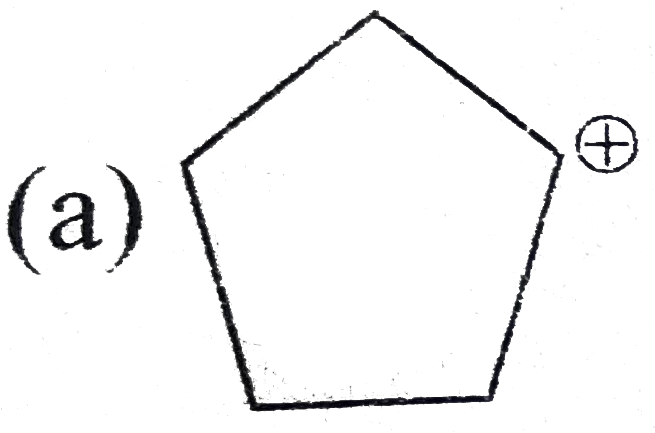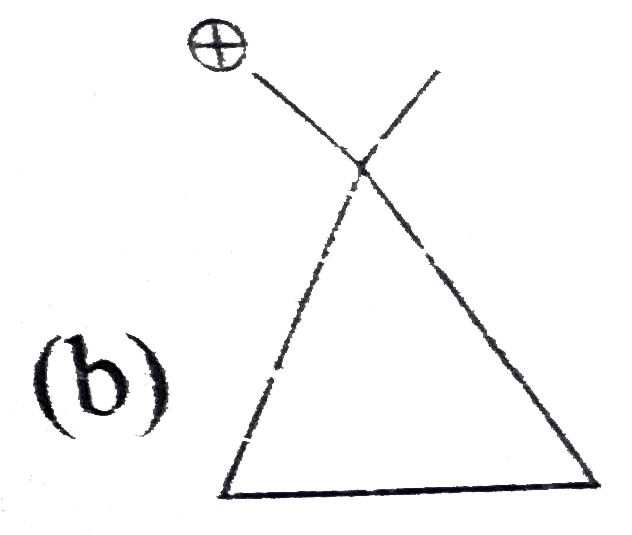In Pinacol-pinacolone rearrangement the reactive species undergoing rearrangement is
Carbene
Free radical
Carbanion
Carbonium ion
The correct Answer is:D
To solve the question regarding the reactive species undergoing rearrangement in the Pinacol-pinacolone rearrangement, we can break down the process step by step.
1. Understanding the Reaction:
The Pinacol-pinacolone rearrangement involves the conversion of pinacol (a diol) into pinacolone (a ketone) under acidic conditions.
2. Formation of the Carbocation:
- The reaction begins with pinacol, which has two hydroxyl (OH) groups. In an acidic medium, one of the hydroxyl groups gets protonated, forming a good leaving group (water).
- This leads to the formation of a carbocation intermediate as the water molecule leaves.
3. Carbocation Rearrangement:
- The carbocation formed is typically unstable and can undergo rearrangement. In this case, a methyl group (CH3) migrates from an adjacent carbon to the positively charged carbon atom, stabilizing the carbocation.
4. Formation of the Carbonyl Ion:
- After the rearrangement, the new carbocation can lose a proton (H+) to form a carbonyl group (C=O), resulting in the formation of pinacolone.
5. Identifying the Reactive Species:
- Throughout this mechanism, the key reactive species that undergoes rearrangement is the carbocation. It is this carbocation that rearranges to form the final product, pinacolone.
Final Answer:
The reactive species undergoing rearrangement in the Pinacol-pinacolone rearrangement is the carbocation.
---
The Pinacol-pinacolone rearrangement involves the conversion of pinacol (a diol) into pinacolone (a ketone) under acidic conditions.
- The reaction begins with pinacol, which has two hydroxyl (OH) groups. In an acidic medium, one of the hydroxyl groups gets protonated, forming a good leaving group (water).
- This leads to the formation of a carbocation intermediate as the water molecule leaves.
- The carbocation formed is typically unstable and can undergo rearrangement. In this case, a methyl group (CH3) migrates from an adjacent carbon to the positively charged carbon atom, stabilizing the carbocation.
- After the rearrangement, the new carbocation can lose a proton (H+) to form a carbonyl group (C=O), resulting in the formation of pinacolone.
- Throughout this mechanism, the key reactive species that undergoes rearrangement is the carbocation. It is this carbocation that rearranges to form the final product, pinacolone.
The reactive species undergoing rearrangement in the Pinacol-pinacolone rearrangement is the carbocation.
Topper's Solved these Questions
- BASIC PRINCIPLES OF ORGANIC CHEMISTRYBook:DINESH PUBLICATIONChapter:BASIC PRINCIPLES OF ORGANIC CHEMISTRYExercise:REVISION QUESTIONS FROM COMPETITIVE EXAMS.
Explore 192 Videos
- BASIC PRINCIPLES OF ORGANIC CHEMISTRYBook:DINESH PUBLICATIONChapter:BASIC PRINCIPLES OF ORGANIC CHEMISTRYExercise:SELECTED STRAIGHT OBJECTIVE TYPE MCQS
Explore 64 Videos
- ALKALI EARTH METALSBook:DINESH PUBLICATIONChapter:ALKALI EARTH METALSExercise:Unit test-12
Explore 5 Videos
- BIOMOLECULESBook:DINESH PUBLICATIONChapter:BIOMOLECULESExercise:MATRIX - MATCH TYPE
Explore 8 Videos
Similar Questions
Knowledge Check
 rearranges to :A
rearranges to :A B
B C
C D
D

